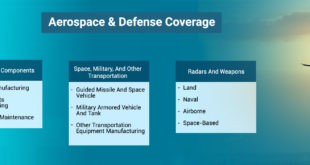Introduction:
In the ever-evolving landscape of military strategy and command, the concept of mission command has emerged as a pivotal and dynamic approach, particularly within the United States Air Force. Mission command represents a fundamental shift in the philosophy of leadership and control, emphasizing empowerment, agility, and the decisive role of subordinate leaders. This article explores the essence of mission command, underscores its paramount importance in guiding Air Force operations in the complex and unpredictable environments of the future, and delves into the Five Cs that underpin this doctrine. Additionally, we will examine the technology imperatives that enable mission command in modern warfare.
Understanding Mission Command:
Mission command is not merely a military doctrine but a philosophy that redefines the way decisions are made, communicated, and executed within the military hierarchy. It stands in contrast to the traditional top-down, directive approach by instilling a sense of autonomy and responsibility at all levels of command. At its core, mission command hinges on trust, mutual understanding, and a shared commitment to the commander’s intent.
The Five Cs of Mission Command:
Central to mission command are the “Five Cs”: character, competence, capability, cohesion, and capacity. These principles serve as the guiding light for Airmen and leaders as they navigate the complexities of modern warfare:
- Character: The ethical and moral qualities of Airmen form the foundation of character. Airmen must uphold these values even in the face of adversity, making decisions that align with the mission’s best interests.
- Competence: Competence encompasses the knowledge, skills, and abilities of Airmen. They must excel in their roles, constantly improving their proficiency to effectively contribute to mission success.
- Capability: Capability refers to the resources and tools available to Airmen, including weaponry, platforms, and personnel. Airmen need the necessary means to accomplish their missions, even in challenging scenarios.
- Cohesion: Cohesion emphasizes teamwork and unity among Airmen. Effective units are those that work seamlessly together, building trust and camaraderie to withstand the rigors of warfare.
- Capacity: Capacity signifies Airmen’s adaptability and readiness to operate in dynamic environments. They must possess the ability to think critically, make swift decisions, and respond effectively to ever-changing circumstances.
The Importance of Mission Command:
Mission command is not a mere shift in military doctrine; it is a response to the evolving nature of warfare itself. In an era defined by uncertainty, rapid technological advancements, and diverse threats, the Air Force must adapt to succeed. Here’s why mission command is of paramount importance:
- Agility: Mission command enables Airmen to make timely and informed decisions without waiting for orders from higher-level commanders. This agility is critical in responding to dynamic and unpredictable situations swiftly.
- Innovation: Empowered by mission command, Airmen are encouraged to think creatively and seek innovative solutions to complex challenges. This culture of innovation can lead to breakthroughs in strategy and technology.
- Trust and Teamwork: Mission command fosters trust and confidence between commanders and subordinates, essential for effective teamwork. Airmen feel valued, knowing they have a genuine impact on the mission’s success.
- Morale and Motivation: When Airmen are entrusted with responsibilities and see the direct impact of their actions, their morale and motivation soar. This sense of purpose enhances their commitment to mission accomplishment.
Air Force’s Recent Embrace of Mission Command:
The importance of mission command in the Air Force was reaffirmed in 2021 when Air Force Chief of Staff Gen. CQ Brown, Jr. released a memo elaborating on its operationalization and application to various Air Force initiatives. Additionally, the signing of Air Force Doctrine Publication 1-1, Mission Command, solidified the mission command principles of centralized command, distributed control, and decentralized execution. It also introduced the “Five Cs” as the foundation for implementing mission command.
Technology Imperatives for Mission Command:
The successful implementation of mission command in modern warfare relies heavily on advanced technologies. Here are the technology imperatives that enable mission command in the 21st century:
- Artificial Intelligence (AI) and Machine Learning: AI-powered systems can rapidly process vast amounts of data, providing Airmen with real-time insights and predictive analytics. This capability enhances situational awareness and decision-making, crucial components of mission command.
- Secure Communication Networks: Mission command requires seamless communication among units and leaders. Secure, resilient, and low-latency communication networks ensure that critical information reaches the right people at the right time.
- Cybersecurity Solutions: In an era of digital warfare, safeguarding mission-critical data and systems is paramount. Robust cybersecurity solutions protect against cyber threats and ensure the integrity of information.
- Data Analytics: Advanced data analytics tools help Airmen extract actionable intelligence from complex data sets. This capability aids in understanding the operational environment and shaping mission strategies.
- Simulation and Training Technologies: Mission command necessitates well-trained Airmen. Simulation and training technologies provide realistic scenarios for Airmen to hone their decision-making skills
Conclusion
In conclusion, mission command represents a transformative philosophy that not only guides the United States Air Force but also paves the way for future military operations in an era defined by complexity, rapid change, and technological advancement. The “Five Cs” of mission command serve as pillars upon which Airmen build their capabilities, character, and cohesion, enabling them to adapt and excel in unpredictable environments.
The recent release of Air Force Chief of Staff Gen. CQ Brown, Jr.’s memo and Air Force Doctrine Publication 1-1, Mission Command, underscores the commitment to this doctrine, emphasizing its applicability to a wide array of Air Force initiatives. Furthermore, technology imperatives, including AI, secure communication networks, and cybersecurity solutions, are integral in enabling mission command, equipping Airmen with the tools and insights needed to make swift, informed decisions. As the Air Force embraces mission command, it positions itself to thrive in the dynamic challenges of the 21st century and ensure the continued defense of the nation and its interests.
 International Defense Security & Technology Your trusted Source for News, Research and Analysis
International Defense Security & Technology Your trusted Source for News, Research and Analysis
